Crayfish industry enjoys long-term prosperity in Qianjiang, C China's Hubei
Early in the morning on May 9, Zheng Peichang, a crayfish farmer in Maoli town, Shayang county, Jingmen city, central China's Hubei Province, came to collect crayfish in a pond.
"Crayfish farming today is nothing like it used to be," said Zheng, who has over 20 years of experience. "Thanks to the 'Qianjiang Crayfish' farming standards, our crayfish are cleaner, larger, and easier to sell," he added.
At 10 a.m. on May 10, crayfish from Hubei arrived at a restaurant in Guangzhou, south China's Guangdong Province, which is more than 800 kilometers away.
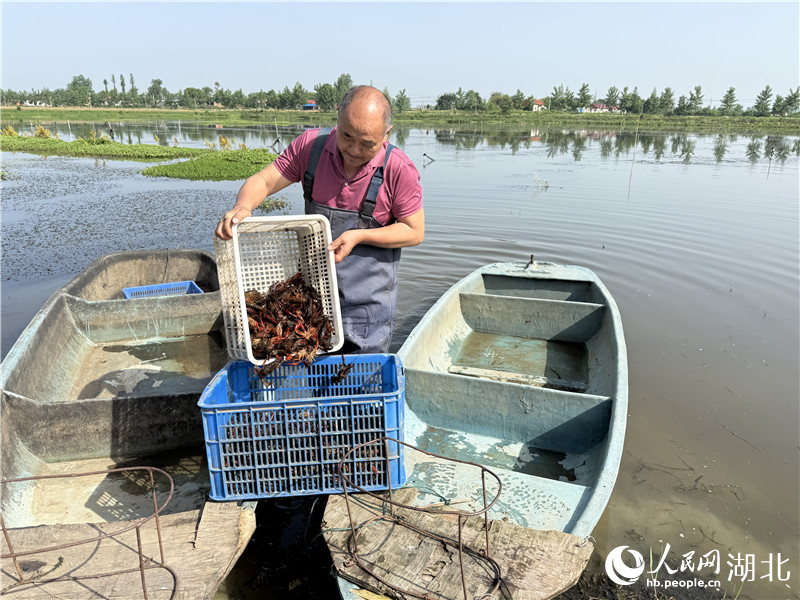
Zheng Peichang collects crayfish in Maoli town, Shayang county, Jingmen city, central China's Hubei Province. (People's Daily Online/Zhang Jun)
"Qianjiang Crayfish" is the only provincial-level public brand for crayfish in Hubei. Centered around 198 standards, the brand has achieved standardization and quality control at every stage.
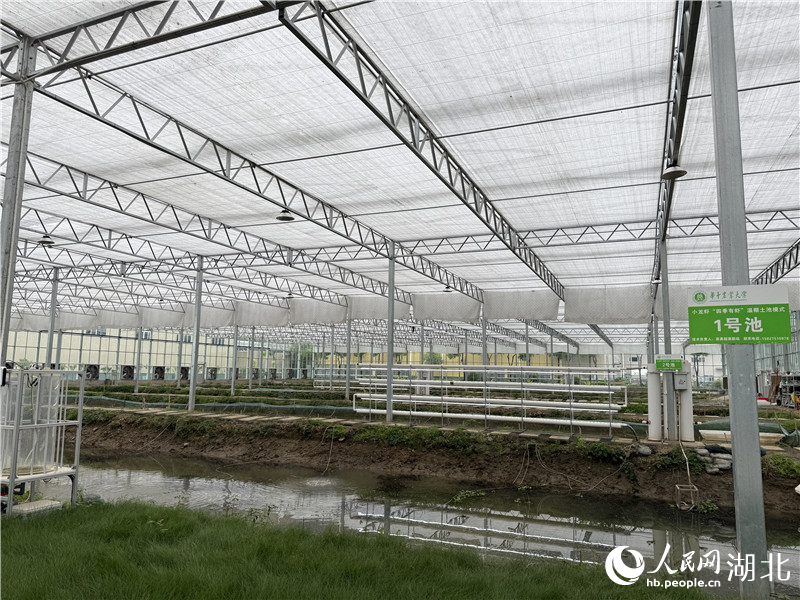
Photo shows the Crayfish Industry Technology Research Institute in Qianjiang , central China's Hubei Province. (People's Daily Online/Zhang Jun)
At the Crayfish Industry Technology Research Institute in Qianjiang city of Hubei, researchers are monitoring the growth of newly bred crayfish.
"The new breed is more disease-resistant, has better meat quality, and grows faster, significantly shortening the farming cycle," said Zhou Ziming, a staff member at the institute.
Qianjiang city has secured 47 patents for crayfish farming and processing, marking a shift from traditional methods to tech-driven aquaculture.
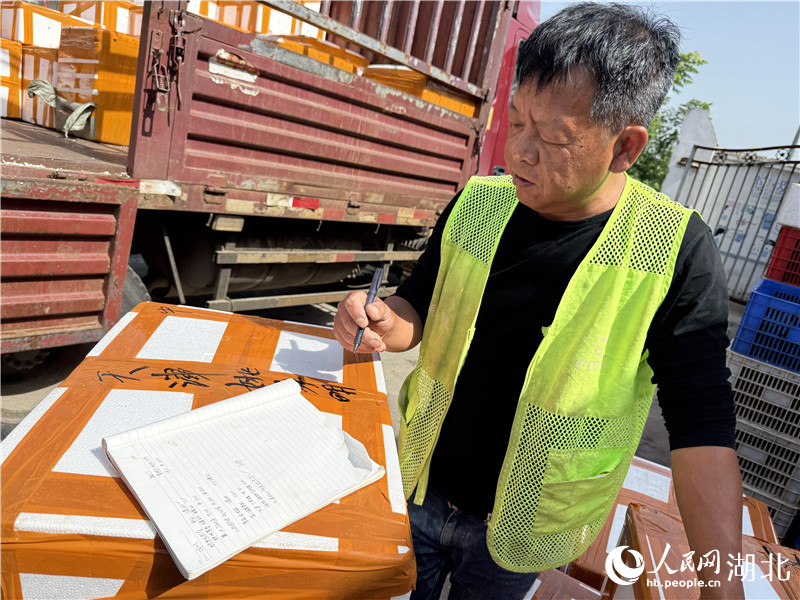
A staff member labels packaged crayfish at the China Crayfish Trading Center in Qianjiang city, central China's Hubei Province. (People's Daily Online/Zhang Jun)
Zheng explained that scientific farming has boosted crayfish yields by 30 percent per mu (about 667 square meters), and the quality is more consistent. A 300-mu rice-crayfish farm can now earn over 1.2 million yuan (about $167,308) annually, said Zheng.
Crayfish thrive in warm climates but struggle in the cold, which once made Qianjiang crayfish a seasonal product and limited the industry's growth.
In recent years, the institute has teamed up with seven research institutes and universities to tackle this challenge. On Dec. 28, 2024, Qianjiang city held its first winter crayfish harvest, marking a shift from seasonal to year-round supply. Data shows that Qianjiang's winter crayfish harvest has reached 24,000 tonnes, generating 2.19 billion yuan in output value.
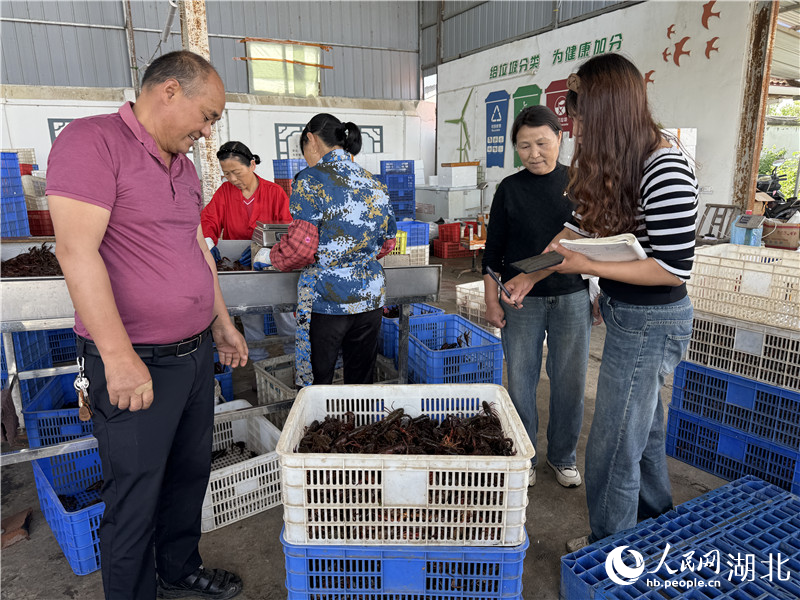
Zheng Peichang (left) sells crayfish in Gaoxing village, Maoli town, Shayang county, Jingmen city, central China's Hubei Province. (People's Daily Online/Zhang Jun)
At one time, transporting live crayfish was the main obstacle preventing Qianjiang's crayfish from going national. To solve this issue, Qianwang Ecological Crayfish Industrial Park Group Corporation established the China Crayfish Trading Center in Qianjiang.
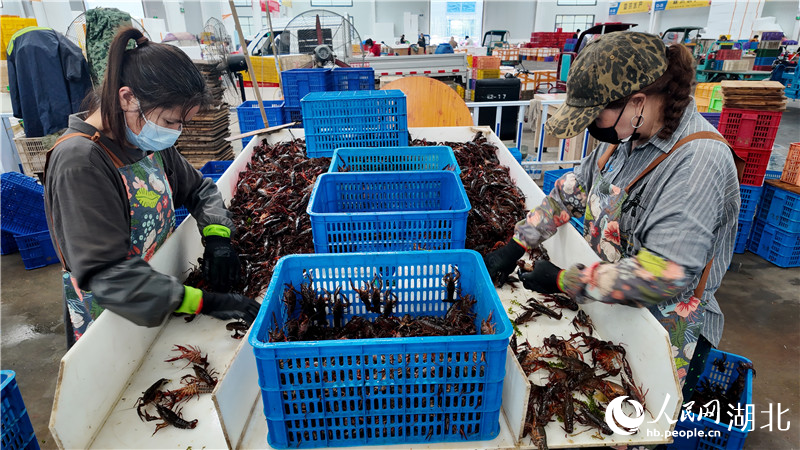
Women sort crayfish at the China Crayfish Trading Center in Qianjiang city, central China's Hubei Province. (People's Daily Online/Zhou Wen)
At midday, the center hits peak activity. Hundreds of trucks line up neatly as workers load boxes of crayfish onto the trucks. "Over 2,000 tonnes of crayfish are shipped from here every day, reaching more than 600 cities across the country," said the center's director.
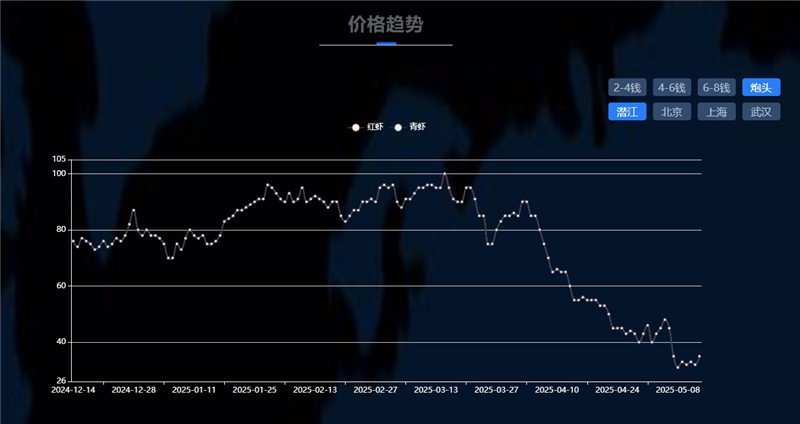
Photo shows crayfish price index. (Photo from a screenshot of a website)
The China Crayfish Trading Center is not just a logistics hub, but also serves as a price indicator for the entire industry. Qianjiang has set up 30 data collection stations nationwide. By aggregating industry data, it has created a crayfish price index that helps guide pricing for producers and buyers alike.
Joint brand building has also played a key role in help Qianjiang crayfish gain popularity.
In 2024, 16 major crayfish producing areas in Hubei joined forces to build the "Qianjiang Crayfish" brand. Qualified companies must pass five checks: water quality, product standards, processing methods, traceability, and market reputation.
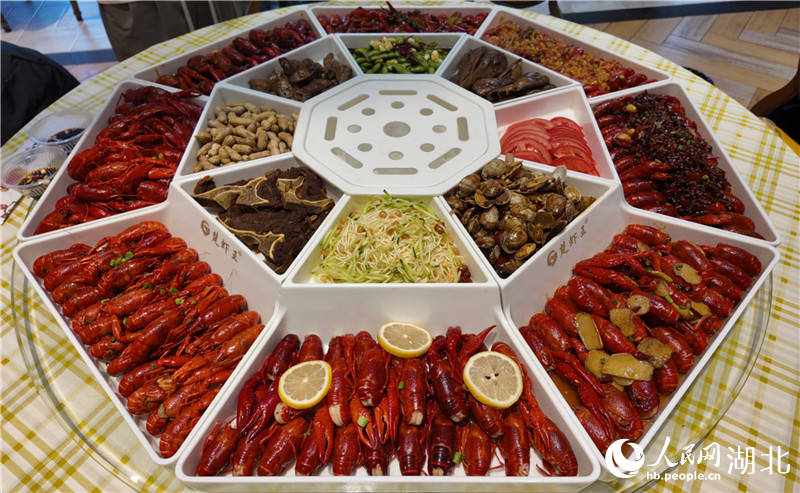
Photo shows a crayfish feast offered by a crayfish restaurant in Qianjiang city, central China's Hubei Province. (People's Daily Online/Zhou Wen)
Companies in Qianjiang have developed a range of crayfish products, including ready-to-eat crayfish tails, sauces and seasonings. Even shells and heads are processed into crayfish powder and oil. Today, Qianjiang is home to 48 crayfish processing companies above designated size, with an annual processing capacity of 800,000 tonnes and an annual output value of 27 billion yuan.
In 2024, the crayfish output in Hubei reached 1.44 million tonnes, up 15.6 percent year on year. The total industry output value hit 184.1 billion yuan, increasing 9.7 percent year on year.
Photos
 Fireflies put on spectacular light show at Xishuangbanna Tropical Botanical Garden, SW China's Yunnan
Fireflies put on spectacular light show at Xishuangbanna Tropical Botanical Garden, SW China's Yunnan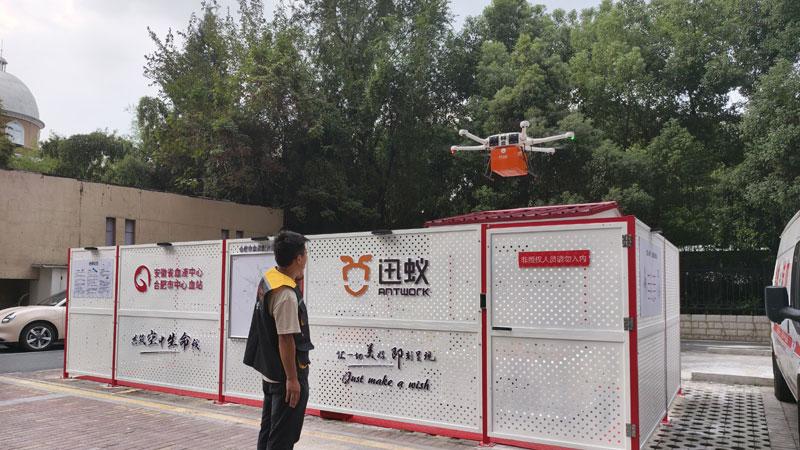 Company in Hefei, E China's Anhui builds "air expressway" to speed up delivery of goods, medical supplies
Company in Hefei, E China's Anhui builds "air expressway" to speed up delivery of goods, medical supplies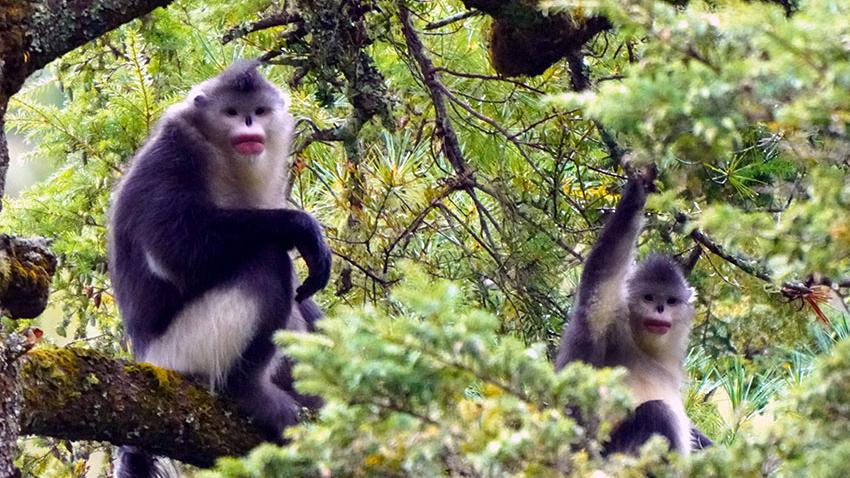 Black-and-white snub-nosed monkeys thrive at nature reserve in SW China's Yunnan
Black-and-white snub-nosed monkeys thrive at nature reserve in SW China's Yunnan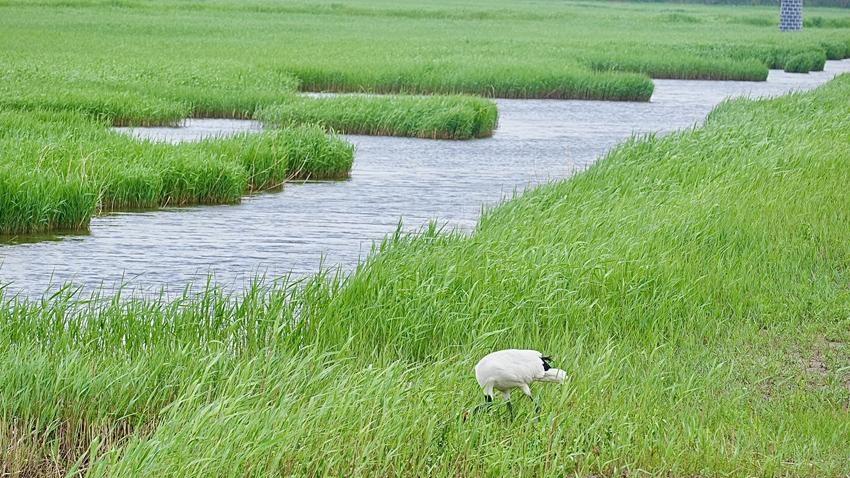 Daling River estuary in NE China's Liaoning home to nearly 100 bird species
Daling River estuary in NE China's Liaoning home to nearly 100 bird species
Related Stories
- Crayfish harvested in C China's Hubei in winter
- Co-culture of crayfish, aquatic species in Qianjiang, C China's Hubei generates wealth
- Crayfish enter market ahead of time, gain popularity in Wuhan, C China's Hubei
- High earnings for crayfish tasters highlight China's new professions
- Over 10,000 people join crayfish banquet in E China's Jiangsu
- Crayfish-related industry booms in Hubei province
- Crayfish-related industry booms in C China
- Guigang in S China’s Guangxi promotes mixed rice-crayfish farming
Copyright © 2025 People's Daily Online. All Rights Reserved.





